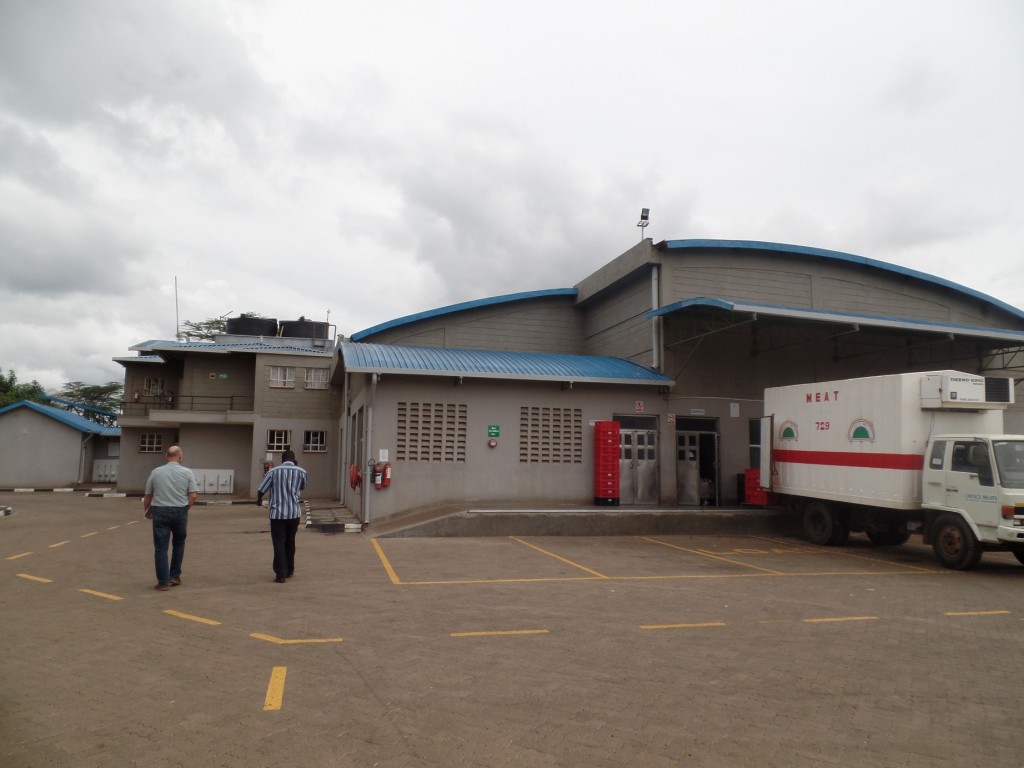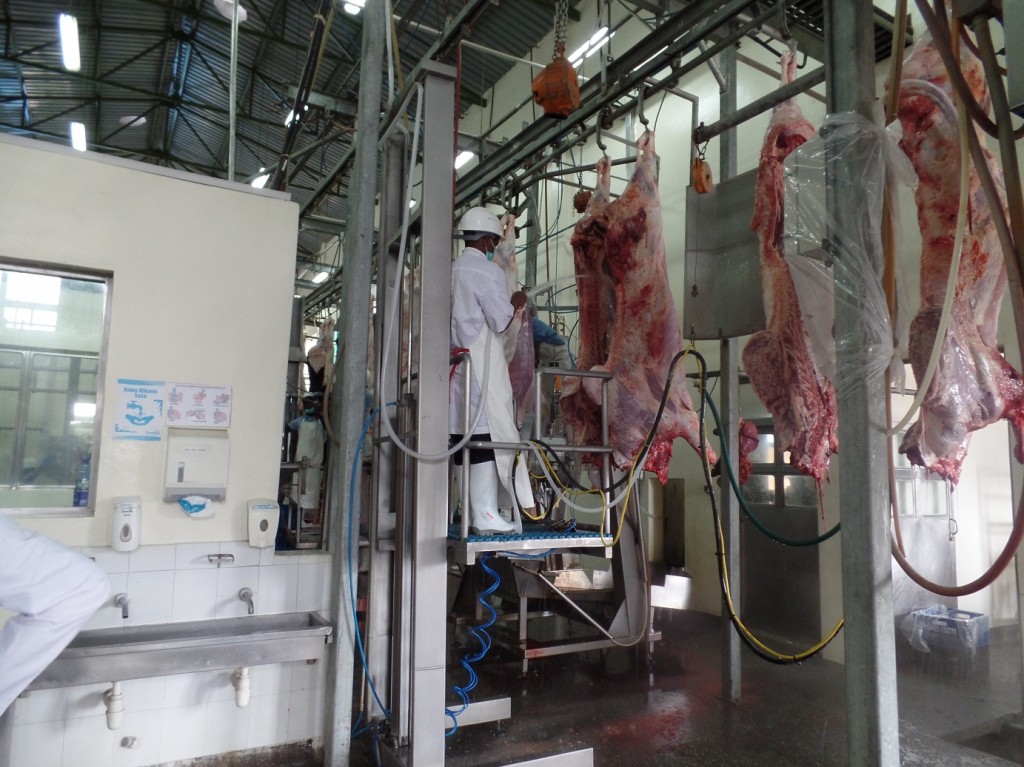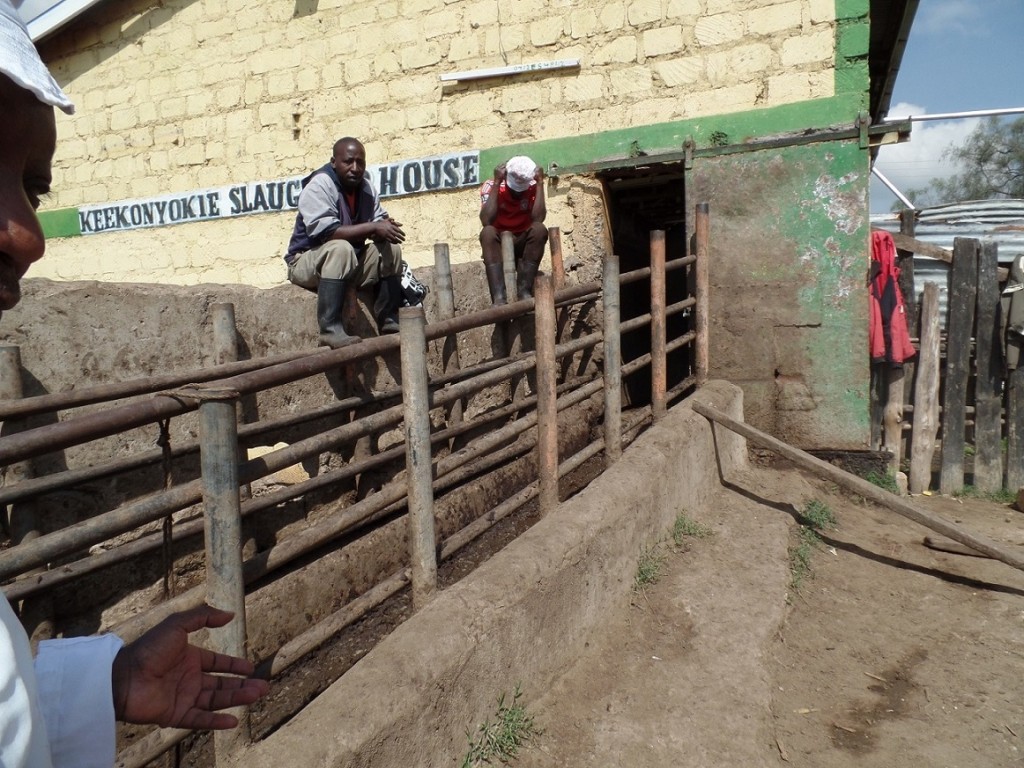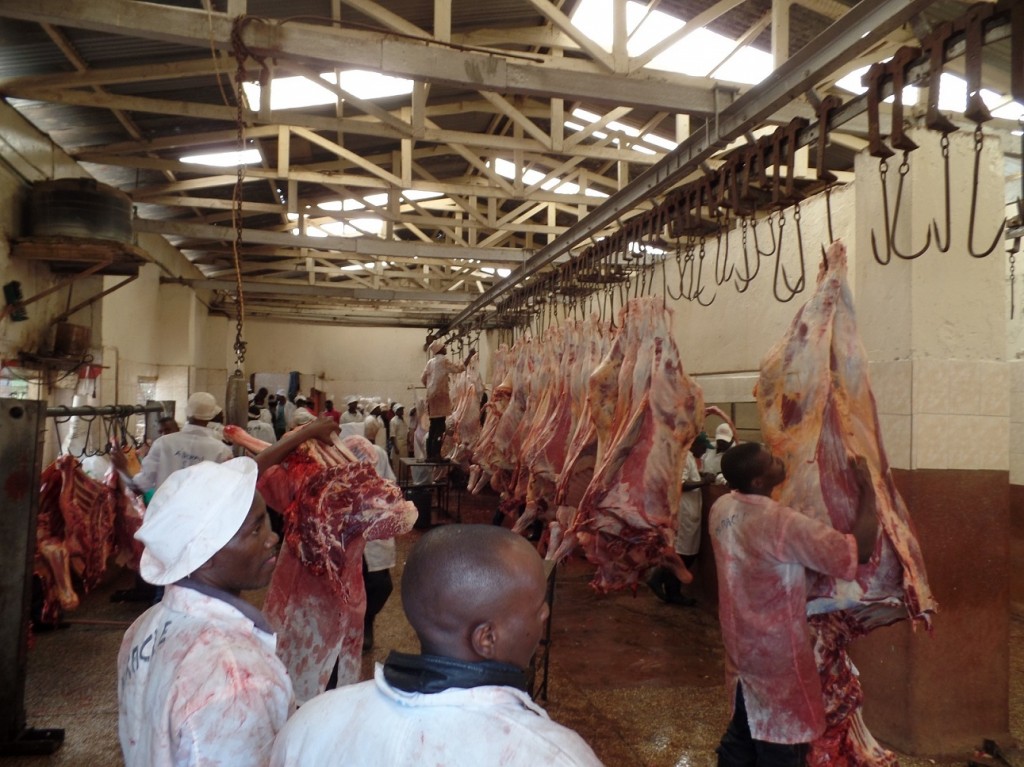“It was the best of times, it was the worst of times, it was the age of wisdom, it was the age of foolishness, it was the epoch of belief, it was the epoch of incredulity, it was the season of Light, it was the season of Darkness, it was the spring of hope, it was the winter of despair, we had everything before us, we had nothing before us, we were all going direct to Heaven, we were all going direct the other way” Charles Dickens, A tale of two cities
In my case, I was going to the Farmers Choice Abattoir and then to the Keekonyokie Abattoir. (Nothing implied here about which is heaven or hell or best or worst.) Both have the same functionality: Cattle arrive at one end and beef exits the other. The basic processes are the same utilizing knives, saws, washtubs, hooks and hoses. However, there are many differences. Farmers Choice is more automated. It has much higher levels of sanitation and it serves a more upscale market. But what was most interesting to me was the different organizational structures.
To maximize utility and minimize the cost of beef to the consumer, an abattoir must operate at capacity, work efficiently and every part of the animal must be used. Farmers Choice and Keekonyokie attain these goals in vastly different ways.
Farmers Choice
Farmers Choice is a $4,000,000 ISO certified export quality meat processing facility that can handle 225 head of cattle per day in a single shift. The company has a full time manager who does nothing but buy cattle from as far away as Tanzania. He can only buy enough cattle to keep the abattoir busy two days a week. The other days are devoted to slaughtering goats and sheep on contract. Farmers Choice managers sell the 5th quarter (offal, skin, horns, blood, bone, head and hooves), minimize waste, insure hygiene standards are met, oversee de-boning, market beef, and supervise the more than 150 employees. Every step of the process is under tight corporate control.
The actual slaughter is state of the art for Kenya. The cattle are rested 24 hours to reduce stress and stunned so they are insensate before being killed. The kill room and skinning and evisceration areas are constantly being cleaned. Hoisting and skinning equipment and saws are electrically powered.
Farmers Choice has found outlets for most parts of the animal. The blood is used as animal feed and as a protein enhancer in sausages. The hide is sold to a tannery. The edible and inedible offal are separated and sold. Even the tendons salvaged in the de-boning process have a market.
But how do they know what to charge for a hide, or a beef heart, or a kidney? Or for that matter the final output, beef? Staying on top of the markets for cattle, beef and the 5th quarter is an essential challenge for Farmers Choice and is done using weekly or monthly data.
Farmers Choice is a scientifically designed plant that strives to produce a quality product at a reasonable price by centrally managing every step in the process. They do their job well.
Keekonyokie
The Keekonyokie abattoir cost, at most, $200,000 to build. It is a Class A certified abattoir which can market its beef anywhere in Kenya. It doesn’t have to. It doesn’t market at all. As a matter of fact, Keekonyokie only manages one part of the process, slaughter. Its 18 employees do nothing but kill the cattle, dress the carcasses and clean up at the end of the day. This is done for a price of Ksh 720 per steer. They slaughter 100-150 per day, six days a week. All the other functions happen organically.
Maasai cattle herders walk their cattle to the abattoir and are met by a group of cattle brokers. The brokers supply meat to customers (usually small distributors, butcheries or restaurants) in Nairobi. Knowing what a customers will pay for beef, the broker judges the amount of meat that a steer will produce, figures in what he can get for the 5th quarter, adds the abattoir fee and is ready to buy. A bidding war ensues. With dozens of herders competing to sell (over 350 herders will sell in a given year) and dozens of brokers competing to buy, prices are quickly agreed upon. A broker pays for his cattle and the abattoir’s work begins.
The broker isn’t the only independent businessman in this process. There are the guys who buy hides from the broker to take them to a tannery, guys who deal in the head and hooves, independent butchers who carve out the bones, others who want the edible offal, still others who will provide trucking. In every category there are multiple buyers and sellers. When something is abundant, prices instantly fall. When there is higher demand, prices rise. Every part of the animal is allocated and on its way. At the end of the day all markets have been cleared.
It’s like a stock exchange trading floor only with real blood.
Keekonyokie knows it must provide the facilities, but not the manpower, for all the ancillary activities: a stockyard where the herders and brokers negotiate, rooms and water for the hide and offal washing and processing, space for some deboning and all the necessary health inspectors. To lower costs Keekonyokie uses the blood and other effluent to generate biogas to run a backup generator.
Keekonyokie is a pivotal player in an organically managed process that strives to produce a quality product at a reasonable price. They do their job well.
Ps. The Dickens quote doesn’t have much to do with this post other than the “A tale of two …” hook. I just think it is one of the best opening lines in an English novel, rivaled perhaps by, “Call me Ishmael.”





Great post John. “It’s like a [live]stock exchange trading floor only with real blood.
Farmers Choice capacity changed to 225. Thanks.
Hey, from Texas! Your work has led you into information we all would do well to learn, Adventures galore are your personal experience. Keep on sharing! Robbie (TH) Swall
Well written as usual John and a window on a world about which I know little.